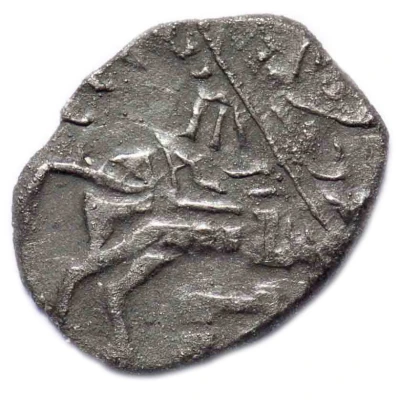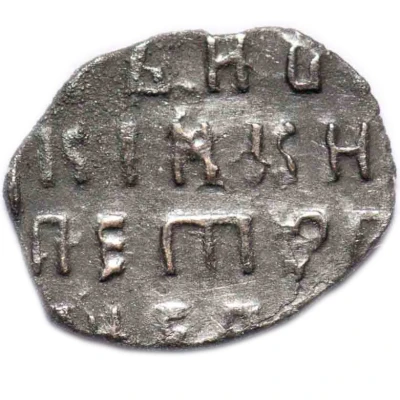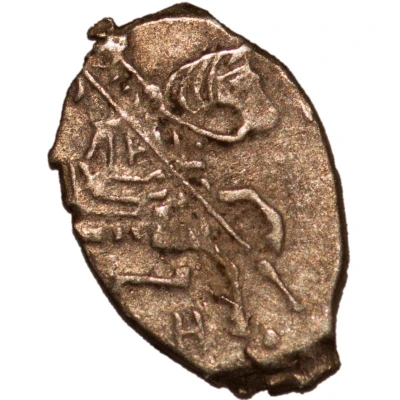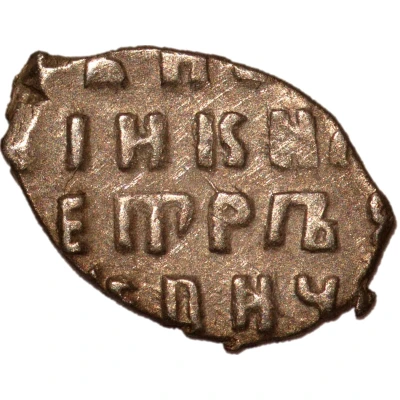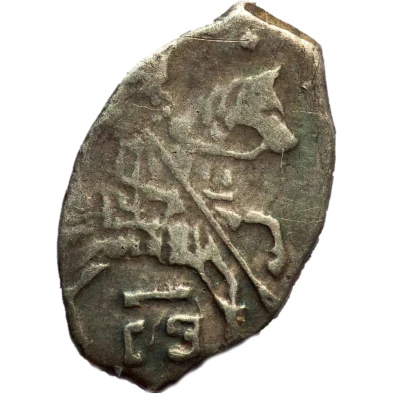
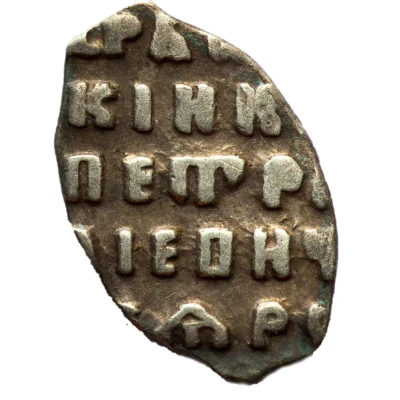

© Grinya (CC BY-NC-SA)
Kopeck - Peter I
7207 (1699) year| Silver | 0.28 g | - |
| Issuer | Russian Empire |
|---|---|
| Tsar | Peter I the Great (1682-1721) |
| Type | Standard circulation coin |
| Year | 7207 (1699) |
| Calendar | Byzantine |
| Value | 1 Kopeck (1 Копейка) (0.01) |
| Currency | Rouble (1533-1717) |
| Composition | Silver |
| Weight | 0.28 g |
| Shape | Round (irregular) |
| Technique | Hammered (wire) |
| Demonetized | Yes |
| Updated | 2024-10-07 |
| Numista | N#113684 |
|---|---|
| Rarity index | 80% |
Reverse
Cyrillic inscription.
Legend "Царь и Великий Князь Петр Алексеевич всея России".
Script: Cyrillic
Lettering:
ЦРЬИВЕ
ЛИКIИКНA
ЗЬПЕТРЪЯ
ЛЕЗIЕВИЧЪ
ВСЕЯРW
CCIИ•
Translation: Tsar and Grand Prince Peter Alexeyevich of all Rus
Comment
© Image courtesy of Ступинский поисковик (http://spsearch.ru)
Interesting fact
The Kopeck coin , which was issued during the reign of Peter I in 1699, features an image of the Russian emperor on horseback, with a crown on his head and a scepter in his hand. This design was meant to symbolize Peter's power and authority as the ruler of the Russian Empire. However, the coin's design also contains a subtle error: if you look closely at the horse's tail, you'll notice that it appears to be growing out of Peter's own body, rather than out of the horse's back. This mistake was likely the result of a miscommunication or misunderstanding between the coin's designer and the minting team, and it has become a popular topic of discussion among numismatists and collectors.
